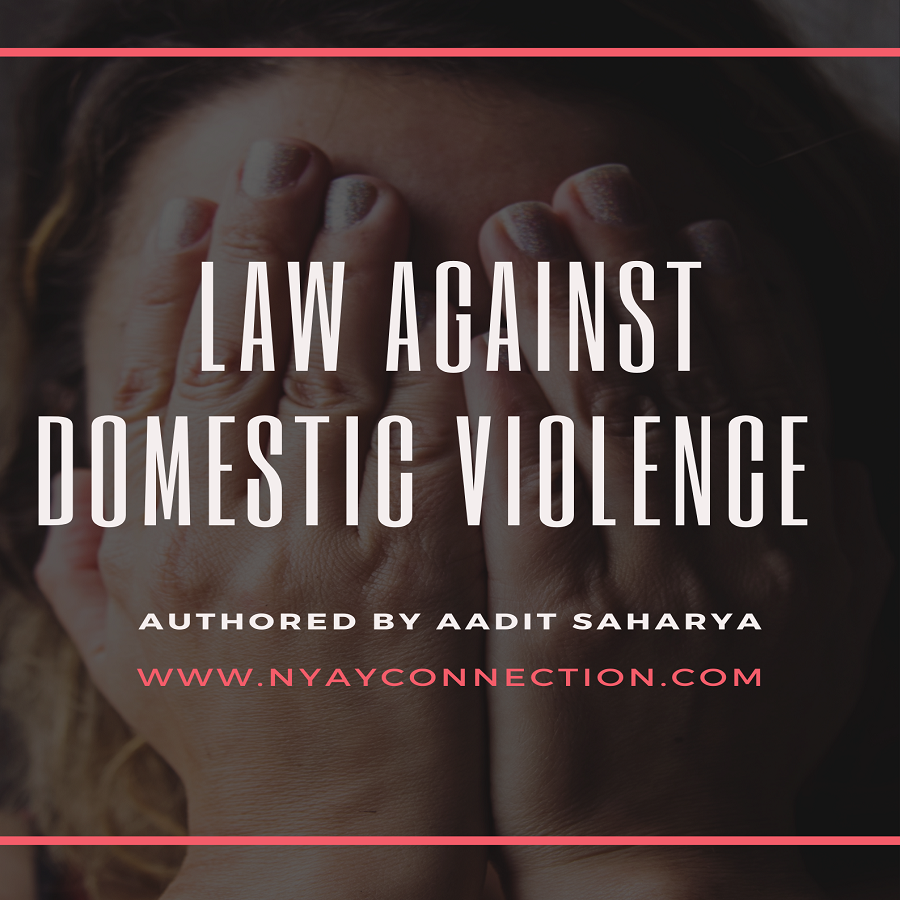ABSTRACT:
The Protection of Women from Domestic Violence Act, 2005 is a landmark legislation in India that has the potential to change the lives of millions of women who have been victims of domestic abuse. This legal research paper provides an insightful overview of the act, examining its key provisions and their implications for the protection of women’s rights in the country. This paper delves into the legal and social dimensions of this issue. Through an engaging analysis of the act, the paper explores how it empowers women to seek protection and support against all forms of violence, including physical, sexual, emotional, verbal, and economic abuse. Overall, this paper underscores the significance of the Protection of Women from Domestic Violence Act, 2005 as a key tool for the protection of women’s rights in India which will engage readers and leave them with a better understanding of the legal and social dimensions of domestic violence against women.
INTRODUCTION:
Domestic violence is a pervasive social problem that affects millions of women worldwide. In India, domestic violence has been recognized as a serious violation of human rights, and the Protection of Women from Domestic Violence Act, 2005 (DV Act) was enacted to provide legal protection to women who experience violence or abuse within their households. The DV Act is a comprehensive legislation that seeks to protect women from all forms of domestic violence, including physical, sexual, emotional, and economic abuse.
The DV Act not only provides legal remedies to women who experience domestic violence but also recognizes their right to a safe and secure living environment. The law recognizes that domestic violence is not just a private matter but a public health and social issue that needs to be addressed by the State. The DV Act also recognizes that domestic violence is not limited to physical abuse but includes other forms of violence and harassment, such as emotional abuse, verbal abuse, economic abuse, and stalking.
The DV Act is a progressive legislation that marks a significant departure from the traditional approach to domestic violence, which viewed it as a private matter and did not provide adequate legal protection to women. However, the implementation of the DV Act has been challenging, and there have been concerns regarding its misuse and abuse. Some stakeholders have criticized the law for being biased against men and for not providing adequate safeguards against false or exaggerated complaints.
This legal research paper will provide an overview of the Protection of Women from Domestic Violence Act, of 2005, and will examine its salient features, scope, and limitations. The paper will analyze the implementation of the law and its impact on women’s rights in India. The paper will also examine the challenges and concerns regarding the misuse and abuse of the law and will discuss the need for reforms and measures to address these challenges. The paper aims to provide a comprehensive understanding of the DV Act and its significance in the context of domestic violence in India.
RESEARCH METHODOLOGY:
The research is carried out using a doctrinal research approach, using data gathered from diverse sources such as case laws, online journal articles, books, research papers as well as online websites.
THE PROTECTION OF WOMEN FROM DOMESTIC VIOLENCE ACT, 2005:
The Protection of Women from Domestic Violence Act, of 2005, is a comprehensive law that provides legal remedies to protect women from domestic violence. The Act defines domestic violence as any act or omission that harms or injures or endangers the health, safety, life, limb, or well-being, whether mental or physical, of the aggrieved person or tends to do so, and includes causing physical abuse, sexual abuse, verbal and emotional abuse, and economic abuse. The Act applies to all women who are or have been in a domestic relationship with the abuser.
The Act provides various legal remedies to protect women from domestic violence, including protection orders, residence orders, monetary relief, custody orders, and compensation orders. The protection order prohibits the abuser from committing any act of domestic violence or aiding or abetting in the commission of such an act. The residence order provides the aggrieved person with the right to reside in the shared household, regardless of whether she has any right, title, or interest in the shared household. The monetary relief order provides the aggrieved person with monetary compensation for the loss of earnings, medical expenses, and other expenses incurred as a result of the domestic violence. The custody order provides the aggrieved person with the custody of her children. The compensation order provides the aggrieved person with compensation for the injuries suffered as a result of the domestic violence.
The Act also provides for the appointment of protection officers, who are responsible for providing assistance to the aggrieved person in filing a complaint and obtaining legal remedies under the Act. The protection officers are also responsible for ensuring the compliance with the protection order and for the implementation of the provisions of the Act.
IMPACT OF THE ACT:
The Protection of Women from Domestic Violence Act, of 2005, has had a significant impact on society. The Act has provided women with legal remedies to protect themselves from domestic violence, and it has also created awareness about the issue of domestic violence. The Act has empowered women to take legal action against their abusers, and it has also increased the reporting of domestic violence cases. The Act has also provided women with the support and resources they need to break free from abusive relationships.
CHALLENGES FACED IN THE IMPLEMENTATION OF THE ACT:
Although the Protection of Women from Domestic Violence Act, of 2005, is a significant law, its implementation has faced several challenges. One of the major challenges faced in the implementation of the Act is the lack of awareness among women about the Act and its provisions.
Another challenge in the implementation of the Act is the lack of training and resources for the protection officers responsible for implementing the provisions of the Act. Protection officers play a crucial role in assisting the aggrieved person in filing a complaint and obtaining legal remedies under the Act. However, the lack of training and resources for protection officers has resulted in delays and inadequate assistance to the aggrieved person.
Additionally, the Act faces challenges in its implementation due to the social and cultural norms prevalent in Indian society. Domestic violence is often normalized and accepted as a part of everyday life in many parts of India, and women may be discouraged from seeking legal remedies and protection due to the stigma associated with being a victim of domestic violence. This attitude of the society toward domestic violence has resulted in underreporting and inadequate action against the abusers. The patriarchal nature of Indian society often places women in a subordinate position and may result in them being denied their rights under the Act. Furthermore, the Act does not provide for criminalizing domestic violence, which has led to a lack of deterrence for the abusers.
CASE LAWS:
Prabha Tyagi vs Kamlesh Devi: The appellant had married Kuldeep Tyagi according to Hindu rituals in 2005, and they resided with his family members in his ancestral home. Unfortunately, Kuldeep Tyagi passed away due to a car accident on July 15, 2005. The appellant was mistreated and abused by her matrimonial family after her husband’s death, and therefore, she moved to Dehradun. She approached the SJM under Section 12 to protect her right over her husband’s property and to seek compensation under the D.V. Act. The High Court of Uttarakhand and Addl. Sessions Judge’s judgment was overturned, and the Hon’ble Apex Court laid down that a Magistrate is eligible to issue an ex-parte, interim, or a final order under Section 12 of the D.V. Act, even without a Domestic Incident Report. The Court also ruled that a woman who has suffered or is suffering from domestic abuse can seek remedies under the D.V. Act, including the right to live in a shared home under Section 17, and that a subsisting domestic relationship is not necessary when an aggrieved person files an application under Section 12 of the D.V. Act.
Indra Sarma v. V.K.V. Sarma: Indra Sarma was in a live-in relationship with V.K.V. Sarma, who was already married, for 18 years. When V.K.V. Sarma abandoned Indra Sarma without maintaining her, she filed a case under the Protection of Women from Domestic Violence Act, of 2005. Two lower courts found V.K.V. Sarma guilty of domestic violence and directed him to pay a maintenance amount of Rs.18,000 per month. However, the High Court of Karnataka set aside the orders of the lower courts, stating that Indra Sarma knew that V.K.V. Sarma was married, and her relationship with him did not fall within the definition of “relationship like marriage” under the Act.
The Supreme Court upheld the High Court’s decision but created an exception. The court stated that if a woman begins to live with a man who is already married, without knowing that he is married, she will still be considered to be in a “domestic relationship” under the Act. Therefore, if the man fails to maintain her, it will amount to “domestic violence” within the meaning of the Act, and she will be eligible to claim reliefs such as maintenance and compensation.
These cases illustrate the importance of the Protection of Women from Domestic Violence Act, of 2005 in protecting women from violence and ensuring that they have access to justice and support services. They also highlight the challenges and successes in its implementation, and the ongoing work that is needed to ensure that the Act is fully implemented and its provisions are effectively enforced.
MISUSE OF THE DOMESTIC VIOLENCE ACT:
The Domestic Violence Act, of 2005 is a crucial piece of legislation that aims to protect women from domestic violence and abuse. However, in recent years, there have been increasing reports of women misusing the act for their own benefit.
One common form of misuse is the filing of false or exaggerated complaints against husbands or in-laws. Some women use the act as a tool to settle personal scores or to gain an upper hand in divorce or custody battles. They may fabricate stories of abuse or exaggerate minor incidents to portray themselves as victims and their husbands or in-laws as perpetrators.
Another form of misuse is the misuse of interim relief provisions provided by the act. Some women file complaints solely to obtain financial benefits such as maintenance, residence, or custody of children. They may even threaten to file a false complaint to extract money or other concessions from their husbands or in-laws.
Such misuse not only undermines the credibility of genuine cases of domestic violence but also leads to undue harassment and hardship for the accused. It also leads to a lack of faith in the legal system and a loss of confidence in the act itself.
In the case of Arnesh Kumar v. State of Bihar, the Supreme Court of India did not specifically address the issue of women misusing the Domestic Violence Act. However, addressing the issue of women misusing their powers, it has emphasized the need to prevent the misuse of the law and the power to initiate legal proceedings. Women in order to harass the husband or family of the husband, file fake cases of domestic violence against relatives who not only are incapable of committing such an act [for example, bedridden] but also who were not even present in the same continent. The court’s direction to police officers to conduct a preliminary investigation before making an arrest in cases of domestic violence implies that false or exaggerated complaints should not be treated as genuine cases of domestic violence. The court’s emphasis on the need for prima facie evidence before making an arrest can also act as a deterrent to the misuse of the act by women.
It is crucial to distinguish between genuine cases of domestic violence and false or exaggerated complaints. The act should be implemented in a balanced and fair manner, with due consideration given to the rights of both parties. The issue of women misusing the Domestic Violence Act is a complex issue that requires a nuanced approach, and it may require separate judicial scrutiny in the future.
While the Domestic Violence Act, of 2005 is a significant step towards protecting women from domestic violence, it is essential to ensure that it is not misused for personal gain. A fair and impartial implementation of the act can help to prevent misuse and ensure justice for all.
SUGGESTIONS TO ADDRESS THE CHALLENGES:
To address the challenges in the implementation of the Act, several measures can be taken. First and foremost, awareness programs should be conducted to educate women about the Act and its provisions. This will empower women to take legal action against their abusers and seek protection under the Act.
Secondly, training and resources should be provided to protection officers responsible for implementing the provisions of the Act. This will ensure that protection officers are equipped with the necessary skills and knowledge to assist the aggrieved person in filing a complaint and obtaining legal remedies under the Act.
Thirdly, social and cultural norms prevalent in Indian society that consider domestic violence a private matter should be challenged through awareness programs and advocacy. This will help in changing the societal attitudes towards domestic violence and encourage reporting of domestic violence cases.
Lastly, the Act should be amended to include criminalizing domestic violence. This will provide a stronger deterrence for the abusers and ensure that the punishment for domestic violence is not limited to maintenance or compensation to the aggrieved person.
CONCLUSION AND OPINIONS:
The Protection of Women from Domestic Violence Act, of 2005, is a significant law that provides legal remedies to protect women from domestic violence. The Act has had a significant impact on society by empowering women to take legal action against their abusers and creating awareness about the issue of domestic violence. However, the implementation of the Act faces several challenges, including the lack of awareness among women about the Act, the lack of training and resources for protection officers, and the social and cultural norms prevalent in Indian society. To address these challenges, measures such as awareness programs, training, and resources for protection officers, challenging societal attitudes, and criminalizing domestic violence should be taken. These measures will ensure the effective implementation of the Act and provide women with the necessary protection and support to break free from abusive relationships. There should also be provisions to penalize those who misuse the act.
This article is written by Aadit Saharya. Aadit is a law student at Symbiosis Law School. For feedback relating to this article, he may be emailed at aaditsaharya.legal@gmail.com.
If you are also a law student or a legal professional and wish to contribute to the website, you may email your submission at nyayconnection@gmail.com.




